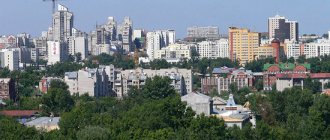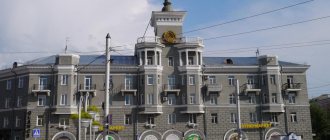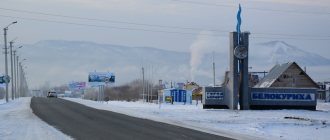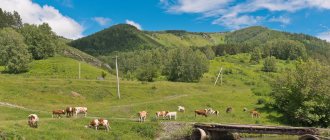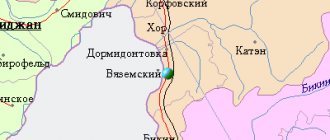The Altai Territory as a territorial entity arose in 1937. It is one of the parts of Western Siberia. It is located in the southeast of the region and covers an area of 169.1 thousand km2. The territory of the Altai Territory stretches from the northern part to the southern part for about 400 km, and from the western to the eastern part, about 600 km.
The northern part of the Altai Territory borders the Novosibirsk region, the northeastern neighbors are the Kemerovo region, the southeastern part borders the Altai Republic, and the southwestern part borders the Pavlodar and East Kazakhstan regions of Kazakhstan.
The territory of the Altai Territory has mountains in the east, the landscape of the central part is elevated plains, and the western and southwestern parts are rich in steppes: Aleiskaya and Kulundinskaya. The region has the following natural zones: steppe, forest-steppe, mountains, taiga, rivers and lakes.
Minerals
The Altai region is rich in mineral resources - soda, coal, cobalt, precious metals and others. In the bowels of the earth there are deposits of marble, jasper, and various granites. The Altai region is famous for its drinking and mineral waters, as well as natural mud for the treatment of many diseases.
In the Altai Territory, the extraction of rare but necessary raw materials for the Russian Federation has been established, namely ores that contain gold, gallium, barite, cadmium and others. But the Altai Territory is not deprived of forest resources. 3471.5 thousand hectares are occupied by forestry. Both cedar and deciduous trees and shrubs grow on the territory of the fund.
Administrative structure
The administrative center of the Altai Territory is the city of Barnaul. The population of Barnaul is 635,550 people. Barnaul is the cultural, industrial, and medical capital of the Altai Territory, which is also an educational center with many public and private universities and research institutes.
In Barnaul, art lovers can visit many museums, theaters and architectural monuments of the 18th-20th centuries. Not far from the city, the international airport Barnaul receives its passengers.
Altai Territory consists of 11 cities and 60 municipal districts. Cities of the region: Barnaul, Aleysk, Biysk, Kamen-on-Obi, Belokurikha, Rubtsovsk, Slavgorod, Zarinsk, Yarovoe, Novoaltaisk, ZATO Sibirsky.
Recommendations
Notes
- President of Russian Federation. Decree No. 849 of May 13, 2000 “On the Plenipotentiary Representative of the President of the Russian Federation in the Federal District.” Entered into force on May 13, 2000. Published: “Collection of Legislation of the Russian Federation”, No. 20, Art. 2112, May 15, 2000 (Decree of the President of the Russian Federation of May 13, 2000 No. 849). On the plenipotentiary representative of the President of the Russian Federation in the federal district
. Effective May 13, 2000). - Gosstandart of the Russian Federation. No. OK 024-95 December 27, 1995 “All-Russian classifier of economic regions. 2. Economic regions,” ed. Changes No. 5 / 2001 OKER. (Gosstandart of the Russian Federation. No. OK 024-95 December 27, 1995. Russian classification of economic regions. 2. Economic regions
, as amended by Amendment No. 5/2001 OKER.). - Article 6 of the Charter of the Altai Territory states that the symbols of the region include the flag and coat of arms, but there is no provision for an anthem.
- Decree of September 28, 1937
- Charter of the Altai Territory, Article 6
- Charter of the Altai Territory, article 67
- Charter of the Altai Territory, article 79.
- Federal State Statistics Service (Federal State Statistics Service) (May 21, 2004). Territory, number, settlements and rural administrations by constituent entity of the Russian Federation ( Territory, number of districts, settlements and rural administration by constituent entity of the Russian Federation
)".
All-Russian Population Census of 2002 (All-Russian Population Census of 2002)
(in Russian). Federal State Statistics Service. Retrieved November 1, 2011. - ^ a b c d
Federal State Statistics Service of Russia (2011).
“All-Russian Population Census 2010. Volume 1" [All-Russian Population Census 2010, vol. 1]. All-Russian Population Census 2010 [All-Russian Population Census 2010]
(in Russian). Federal State Statistics Service. - "26. The size of the permanent population of the Russian Federation by municipalities as of January 1, 2022.” Federal State Statistics Service. Retrieved January 23, 2022.
- "On the calculation of time." Official Internet portal of legal information
(in Russian). June 3, 2011. Retrieved January 19, 2022. - An official throughout the Russian Federation in accordance with Article 68.1. Constitution of Russia.
- Warikoo, K. (2017). Eurasia and India: Regional Perspectives
. Rutledge. ISBN 9781351691956. - "Russian program - Altai." Archived from the original on March 22, 2007. Retrieved November 30, 2006.
- ^ a b c
"Altai region". Archived from the original November 4, 2006. Retrieved November 29, 2006. - "Big Altai - Altai Territory, Altai Republic, Tyva (Tuva), Novosibirsk - Crossroads." Archived from the original on March 14, 2007. Retrieved November 30, 2006.
- “People from Russia - Alexey, guide to the Altai region.” Archived from the original December 30, 2006. Retrieved November 30, 2006.
- History of Mongolia, Volume II, 2003
- Yusopova (2010), pp. 91–109.
- Olson, James Stewart (1998). Ethnohistorical Dictionary of China
. Greenwood Publishing Group. paragraph 11. ISBN 9780313288531. - Lietuvos žydų tremtinių sąrašas Parengė Galina Zhirikova pagal: “Genocido aukų vardynas 1939-1941 m.” Lietuvos gyventojų genocido ir rezistencijos centras. 1998-2005
- "ALEYNIKOV ANDREY ANATOLIEVICH /" Russian Federation "/ III issue / ALL HEROES OF THE ENCYCLOPEDIA / Publishing House" Special Address "". www.llr.ru.
_ Retrieved July 17, 2022. - "Legislative Assembly of the Altai Territory". Archived from the original on April 17, 2013. Retrieved July 17, 2022.
- “News, analysis, forecasts in the field of economics and business, society and politics.” expert.ru
. Retrieved October 12, 2022. - https://tolknews.ru/news/10323-kakova-srednaa-zarplata-v-altajskom-krae
- Altai regional territorial branch of the Federal State Statistics Service. Population estimates as of January 1, 2014 and average for 2013 Archived October 19, 2015 Wayback Machine (in Russian)
- Federal State Statistics Service of Russia (May 21, 2004). “The population of Russia, the constituent entities of the Russian Federation as part of federal districts, urban settlements, urban settlements, settlements, settlements of 3 thousand or more people.” [Population of Russia, its federal districts, constituent entities of the Federation, districts, urban settlements, rural settlements - administrative centers and rural settlements with a population of more than 3000 people] (XLS). All-Russian Population Census of 2002 [All-Russian Population Census of 2002]
(in Russian). - “All-Union Population Census of 1989. The current population of union and autonomous republics, autonomous regions and districts, territories, regions, urban settlements and rural district centers” [All-Union Population Census of 1989: current population of union and autonomous republics, autonomous regions and districts, territories, regions, districts, urban settlements and villages that are district administrative centers]. All-Union Population Census of 1989 [All-Union Population Census of 1989]
(in Russian).
Institute of Demography of the National Research University: Higher School of Economics [Institute of Demography of the National Research University: Higher School of Economics]. 1989 - via Demoscope weekly
. - Census 2010: there are more Russians. Census-2010.ru (12/19/2011). Retrieved August 20, 2013.
- ^ a b
Natural movement of the population in the context of the constituent entities of the Russian Federation. Gks.ru. Retrieved August 20, 2013. - Natural population movement in the context of constituent entities of the Russian Federation. Gks.ru. Retrieved August 20, 2013.
- Catalog of publications :: Federal State Statistics Service.. Gks.ru (05/08/2010). Retrieved August 20, 2013.
- ^ a b c
"Arena: Atlas of religions and nationalities of Russia." Wednesday, 2012.
. “Ogonyok”, No. 34 (5243), 08/27/2012. Retrieved 04/21/2017. .- "Sister cities of China and Russia." Archived from the original on November 12, 2008. Retrieved July 17, 2022.
Sources
- Altai Regional Legislative Assembly. No. 3-ZS June 5, 1995 “Charter (Basic Law) of the Altai Territory,” as amended. Law No. 118-ZS of December 1, 2015 “On amendments to the Charter (Basic Law) of the Altai Territory.” Published: “Altai Truth”, No. 100, June 14, 1995 (Legislative Assembly of the Altai Territory. No. 3-ZS June 5, 1995 Charter (Basic Law) of the Altai Territory
As amended by the Law of December 1, 2015 No. 118-ZS.
About amendments to the Charter (Basic Law) of the Altai Territory
. - Central Executive Committee of the USSR. Resolution of September 28, 1937 “On the division of the West Siberian Territory into the Novosibirsk Region and the Altai Territory.” (All-Russian Central Executive Committee of the USSR. Resolution of September 28, 1937 On the division of the West Siberian Territory into the Novosibirsk Region and the Altai Territory
.). - Yusopova, Evgenia (2010). “Vorgehen gegen die Teilnehmer des Aufstandes von Sorokino in der Altaj-Region.” In Rolf Binner; Bernd Bonwetsch; Mark Junge (ed.). Stalinism in der sowjetischen Provinz 1937–1938.
Die Massenaktion aufgrund des operativen Befehls No. 00447 (in German). Berlin: Verlag Academy. pp. 91–109. ISBN 978-3-05-004685-3.
Population
The religion of the Altai region is diverse. In it you will find Orthodox communities under the leadership of Bishop Maxim of Barnaul and Altai, six active monasteries, as well as about 179 parishes. You can pray in the Intercession Cathedral, which operates in Barnaul, and in the Assumption Cathedral, which is located in the city of Biysk.
Both Lutheran and Catholic communities have their importance. The Muslim community is also influential. The Armenian Apostolic Church operates in the Altai Territory. Buddhism is also represented.
Representatives of the following nationalities live on the territory of the Altai Territory: the largest percentage of the population are Russians, then Germans, followed by Ukrainians, and the remaining percentage includes other nationalities: Jews, Armenians and other peoples.
Altai Territory has a continental climate. Hot short summers with temperatures that reach up to +42C and long cold winters with temperatures ranging up to -55C.
Altai region and its nature
The climate and landscape make it possible for the following animals to live on the territory of the Altai Territory: elk, brown bear, chipmunks, otter, sable, lynx, fox, jerboa, wolf, badger... Representatives of birds are hawks of prey, owls, gray crane...
The flora is represented by a number of cedar and fir trees; birch and aspen also grow. The mountainous local region is decorated with Siberian cedar, from the fruits of which valuable oils are obtained.
Cities here:
General information about the Altai Territory
The land of a thousand lakes, the land of caves and springs.
A place where endless steppe expanses mix with thickets of forests, turn into the blue of mountain peaks and dissolve behind the smoky horizon in the huge sky. Being the heart of the Eurasian continent, the Altai region is rightly named by UNESCO as one of the best places on Earth for recreation and living. A place with an abundance of natural zones in Russia, glorified by Vasily Shukshin in his work, sacred Siberian Shambhala. In addition to mechanical engineering, which is the leading industry in the region, agriculture is widely developed, and the Altai Territory ranks first in the production of environmentally friendly products in Russia. The favorable climate, natural healing resources and the dazzling beauty of the Siberian pearl led to the development of the tourism industry, sports and entertainment recreation and medical and health institutions.
Unfortunately, at the moment the unique ecology of the Altai Territory is rapidly deteriorating. This is mainly due to the heavy and chemical industries that form the basis of the region's economy, as well as the use of a nuclear testing site near Semipalatinsk. At the same time, it is planned to create numerous reserves, wildlife sanctuaries, national parks, and natural monuments.
Emerald forests of Altai
Geographical location
The Altai Territory borders in the northern part with the Kemerovo region, as well as the Novosibirsk region, with which it is connected by the blue thread of the Ob River. In the southeast - with the Altai Republic, and in the south and west with Kazakhstan, from which it often receives gifts from Baikonur in the form of fragments of rocket stages and the remains of rocket fuel in the air. Plains and mountains...in general, the entire Altai region resembles a hill that increases from northwest to southeast.
There are many caves on the mountain slopes; in some, scientists even find traces of the existence of ancient man. Of the 11,000 lakes in the region, the slightly saline Kulundinskoye Lake (600 km2) is considered the largest. Locals even call it the Altai Sea. It is famous for its mineral waters, healing mud, unique pine shores and sandy beaches. Forest areas are also quite common, among which there are fantastically beautiful ribbon forests.
Kulunda Lake
Climate
Since the Altai Territory is located in the very center of the Eurasian continent, all the oceans are thousands of kilometers away. This means that summer here is most often hot, and temperatures can reach almost Egyptian 40-42 degrees. And in winter there is fairly stable clear weather with severe Siberian frosts, and the temperature can easily drop to −55 degrees Celsius.
The greatest amount of precipitation, 800-900 mm, falls in mountain and steppe areas with ribbon forests. Summer rains and thunderstorms often give way to sunny and clear weather. The number of sunny days in summer is very high, and in this regard, many regions of the Altai Territory can be compared with the best resorts of the North Caucasus and Southern Crimea.
Sunny Valley of the Altai Territory
Population
The population of the Altai Territory is 2,398,750 people, most of whom (55.49%), as one would expect, live in cities. Thanks to the vast Siberian expanses, the population density is only 14.28 people/km2. For comparison, the population density in the Leningrad region is 20.87 people/km2, and in the Moscow region it is as much as 158.82 people/km2.
Despite the fact that the birth rate began to increase since 2007, unfortunately, at the moment the population growth rate remains negative. Most likely this is due to the desire of people to live in cities with over a million people, where opportunities for career and growth are much higher. Most of the population (86.79%) are Russians.
Unemployment and average wages
Over the past 8 years, the unemployment rate in the Altai Territory has reached a minimum of 2.4%, and is one of the lowest in the Siberian Federal District. More than 70% of people who applied to employment centers managed to find a job. It is also good news that, as part of the implementation of socially significant work, more than 20,000 temporary and permanent jobs were created, including for unemployed disabled people, large families, etc.
Small businesses were also not ignored: many aspiring entrepreneurs were allocated 60,000 rubles each to develop their business. More than 600 graduates of professional institutions were sent for internships for possible further employment.
With all this, the level of salaries in the Altai Territory occupies a completely disgraceful last 12th place in the district. It is difficult to say whether this is due to the general poverty of the region, the absence of black rivers or nickel mountains, but the fact remains: the average salary of people is no more than 18,000 rubles. For comparison, the average teacher salary in the Yamalo-Nenets Autonomous Okrug is more than 69,000 rubles per month, but in the Altai Territory teachers receive only 15,000 rubles.
Crime
After the murder of the most famous crime boss in Russia, Aslan Usoyan (Ded Khasan), who controlled up to 70% of all thieves in law in Siberia, many law enforcement agencies rightly feared a significant increase in crimes associated with the redistribution of spheres of influence. However, at the moment the crime rate in the Altai Territory is one of the lowest in the Siberian Federal District, and is second only to the Omsk Region.
Meanwhile, the main problem leading to the commission of crimes, as throughout Russia, is alcohol and drugs. According to statistics, in the Altai Territory in 2012, every third crime was committed by a person while intoxicated.
Real estate
It is quite possible to buy a very good two-room apartment on the secondary real estate market in Barnaul, for example, for 2,000,000 rubles, and renting such an apartment will cost you no more than 25,000 rubles per month. Real estate prices are significantly lower than in Moscow and St. Petersburg. But prices for suburban real estate vary quite significantly. Here, as elsewhere, the price depends on personal fantasies, and most importantly, possibilities: the cost of some buildings can reach 20,000,000 rubles, in no way inferior to the capital’s cottages.
